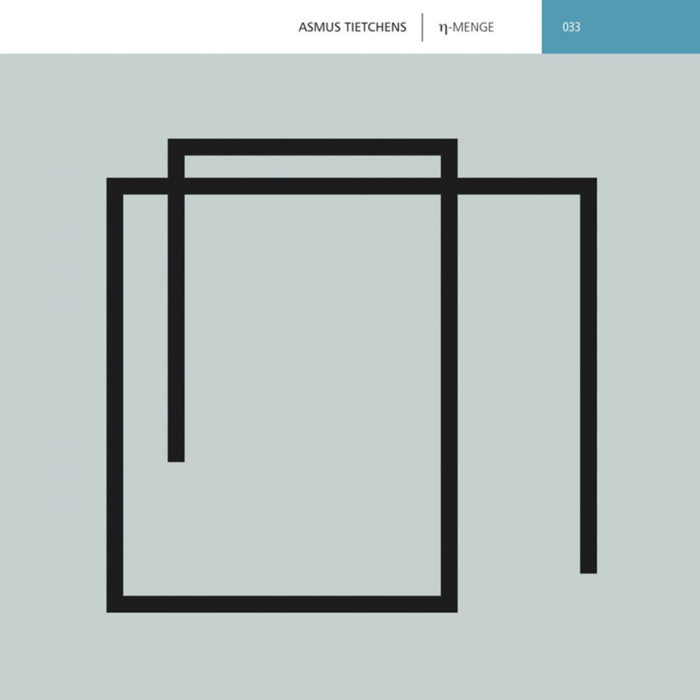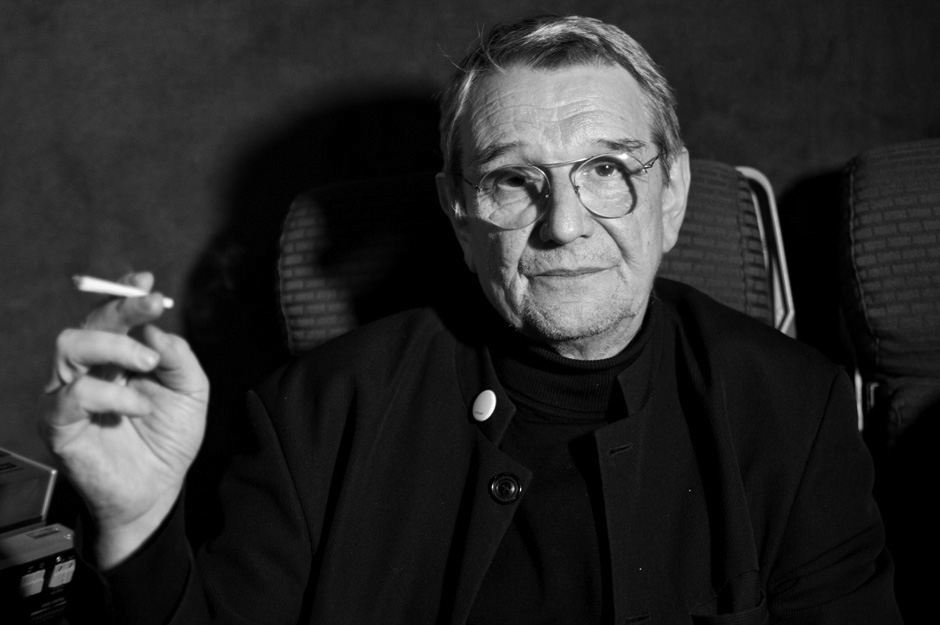The latest in Asmus Tietchens ongoing Mengen series, this album maintains the bold adventurousness and strict minimalism of previous recordings whilst suggesting some sense of evolution along the way. The series was initiated as an exercise in composition based exclusively around spatial manipulations of white noise and sine tones, but this instalment seems to hint at a heightened level of sonic richness and diversity than that policy could ever reasonably hope to accommodate. Some of the pieces on this disc are suggestive of physical sound, with a clearly defined spatial presence, and in the case of ‘Teilmenge 44A’ you hear a kind of watery clamour taking over in the final third. As with so much of Tietchens’ work, this references the old alongside the new, incorporating vintage electronic music’s aesthetics into modern microsound composition, melding reductive drones and primordial modulation techniques into a singular vision. Irrespective of where these sounds come from, you’d have to acknowledge Tietchens as a true craftsman of the genre, not to mention one of the most distinctive voices operating at the extremes of electronic music.
(boomkat.com)
A restrained and patient exploration of sine tones and white noise, Eta brings the Mengen series of sound sculptor Asmus Tietchens to a fitting close. The framework within which Tietchens is working has an inherited formality, yet he opens it up with a sense of flexible, if somewhat a-human, energy in the interplay and overlap of ambient tones and jittery sound effects. As a result, this is as much a ghostly data collage as it is a pseudo-scientific grid. Tietchens has traversed similar territory before, a fact that he at times turns to his advantage, making continual shifts in alignment and emphasis and otherwise testing the capabilities of his resources. He gives “Teilmenge 47” a good exercise – the piece is little else but flux, fidget, and overlay; and the muted hum and jagged choir of crisp effects are highly attractive in their tonicity and elegant, glassy clarity. Tietchens later forgoes purging his sound data of all grime before they sink into the soul, crosshatching these shafts of calm until they become detonations of blooming, messy, unbound texture. In these moments, pieces reach a nervous prostration, and take on an almost graphic intensity.Ergo, Eta-Menge is able to occasionally transcend its own trappings.
(squidsear.com)
Inaugurata da “Alpha-Menge” e proseguita con altri tre volumi su Ritornell ed altrettanti su Line, vede la sua conclusione proprio con questo terzo capitolo per il marchio di Richard Charter l’ormai nota a collezione griffata Asmus Tietchens. E con questo atto finale il decano tedesco sfodera le sue armi migliori lavorando di fioretto sui consueti materiali basici che contraddistinguono le differenti uscite della serie. Toni puri, onde sinusoidali e rumore bianco subiscono un intensivo trattamento di smagliamento e defoliazione – immaginiamo attraverso il filtro di modulatori ad anello ed altre diavolerie analogiche – e ridotti a riflessivo baluginare di suoni cavi e circolari, praticamente sommessi mormorii sub-acquatici, quasi tendono a scomparire nell’orizzonte stereofonico. Non c’era modo migliore per mettere punto alla collana, ritornando in altre parole ai vecchi splendori e dando nuovo smalto all’idea da tempo consunta di silenzio amplificato. (8)
(blow up, italy)
My education is historical but not very classical – so don’t ask me to translate any latin nor to tell you how many letters the Greek alphabet has. Tietchens released a whole series of works called ‘Menge’ with a Greek letter before: alpha, beta, delta, gamma, epsilon, zeta and now the final one eta (meaning that he won’t complete the alphabet, as there is of course omega – that much I do know). In many of his works, Tietchens explores something, say the sound of paper or voice or here sine tones and white noise, until things are fully explored. It gives us a whole body of works, like his ‘Hydrophonien’ or his ‘Teilmenge’, going here from number 43 to number 50. Tietchens feeds his sine waves and white noise through bunches of ring modulators and sound effects, scrapes off the sound of the tape and amplifies the silence. That is at least how I imagine this. Eta-Menge is a beautiful, silent work that works great, again. Perhaps perhaps perhaps there is a bit of fatigue in this series, and we know what it is all about. It’s good, it’s great but it’s also good that this comes to a conclusion. Those who are superficially interested in Tietchens may not need any other portion of Menge (pun intended), but the die hard Tietchens inside this reviewer loves it of course immensely.
(vital weekly, the netherlands)
Phantom tones drift through most of the settings with intermittent scrapes and rumbles instilling tension and providing contrast. “Teilmenge 47” appears to smother the unearthly mumble of a low, distorted voice in a jetstream. In “Teilmenge 45,” Tietchens overlays ambient tones with convulsive ruptures that suggest the amplified groan and cry of an exhausted animal. The concluding “Teilmenge 48” is noticeably more upbeat, even jubilant in its way. The overall approach isn’t dissimilar to Friedl’s-both artists obsessively concentrate on the sonic possibilities associated with restricted sound generators-but Tietchens’ ghostly release exudes a less “natural feel” on account of the cool, electronic character of the source materials. Even so, headphones listening still proves rewarding.
(textura.org)
Not the happy end Hollywood would have devised: A subtly active and subliminally dynamic album. It would be wrong to conclude from some critical writings Asmus Tietchens has done for German magazine Auf Abwegen that he holds an ambivalent stance towards drones. Over the years, he has not only repeatedly used them in his work, but even been instrumental in embedding them firmly in experimental electronic music in general. h-Menge is a striking display of his deep grasp of the many different ways in which they can complement existing sounds or constitute compositions in their own right.
It is true, however, that Tietchens has not stood by idly when the term has been abused to camouflage insubstantial tracks as high forms of art. On h-Menge, too, drones are never just a cheap excuse for letting the machines rattle on while going for a fresh cup of coffee. Instead, it is a subtly active and subliminally dynamic album, which builds moods through the backdoor of unexpected associations between different classes of sound, through symbiotic contrasts and through the effective use of silence and near-silence.
Opener “Teilmenge 43A” sets the tone for the entire record. A sharp, inwardly distorted bleeping sound jumps straight into your face, runs through a short melodic scale and fades out into the fade-in of an approaching atmosphere. This background zone at first has nothing but spatial characteristics, spanning a space for discreetly hissing microtonal developments and sudden outbursts of bass-heavy tonal hickups. Gradually, however, it expands and releases its energy, growing in tension and harmonic richness, focussing attention in a free but strictly confined territory.
Just as on his recent collaboration with Richard Chartier, Asmus Tietchens makes great use of the simultaneously opposing and mutually supportive qualities of oblique drones and surgically precise sound incisions. h-Menge takes a step further in this respect by bringing the latter to the fore and dovetailing them into patterns of surrealist intensity. Strictly speaking, there are no traditional motives or themes on the album, but Tietchens lights his elements in such a way that they take on melodic functions, combining them into rhythms or bringing out their vocal potential.
What sets this effort apart is its unashamed emotionality. After the dark magnetism of the opening half of the album has passed, “Teilmenge 44A” suddenly flirts with a shower of gentle raindrops against a warm pulse. And closing track “Teilmenge 48” uses ripped-apart piano chords and billowing pads to great effect, building up a sensous ambiance inside the void and almost sounding like a consoling nightmare vision of dub at times.
In these instances, Tietchens is very close to the cotton-like softness of some of the records he seems to despise, but his drones always seaze the earliest chance to jump off their self-indulgent routine to make way for something new.
Everything must come to an end and previous reviews have already shown slight signs of fatigue with regards to the Mengen-series. And yet, after h-Menge which has been announced as the final installment, there are plenty of starting points for it to go on. The album catches a certain vibe, a particular humaneness about its analytical process and turns it into a work, which comes close to the listener in many different ways. It is not the happy end Hollywood would have devised and yet it is full of sentimentality. With everything in his oeuvre carefully planned, you can be sure Asmus Tietchens didn’t want it any other way.
(tokafi.com)
Another superb addition to the Line catalogue from experimental artist Asmus Tietchens. Accessibly experimental and a great companion to the Menge series, this is a work of great substance. Deep, beautifully produced electronic music with elements from various styles. It’s at once listenable, yet challenging. Excellent, as you’d expect from this brilliant label.
(smallfish, UK)
A listen to almost any Asmus Tietchens album reveals an unwavering devotion to finding extremes within limited parameters. I can’t claim to have heard all of the dozens of albums and collaborations, but even Litia, his 1983 Sky Records foray into industrial dance music, forewent typical dancefloor build and release to focus on the pure texture of that tension. It fails as a dance album, but for those with their ears to the speaker instead of the beat, it’s a remarkable deconstruction. The point being, even when operating within clear and necessary signposts, Tietchens finds ways to limit the scope further, or to at least make that scope feel limited by highlighting the resultant claustrophobia created by limitations.
The release lies in Tietchens’ deft and selective exploration of those parameters. A tour through his back catalog, a large chunk of which has been reissued by the Die Stadt label over the past several years, shows a variety of approaches to electronic composition, from Formen Letzter Hausmusik’s haunting electro-acoustic wanderings to his recent Menge series. On the surface, this is his most rigorous project, based entirely on sine tones and white noise. Compared to his more industrial-leaning output or his Kontakt der Junglinge collaboration with Thomas Köner, the sound palette is defiantly struck.
The Menge releases haven’t been about building and developing so much as juxtaposing chosen frequencies and timbres. Perhaps due to its being the last in the series, h-Menge heightens this strategy, with the tracks having more noticeable through-lines than their predecessors. The busy, near-horror design of “Teilmenge 47” gives way to the ominous drone of “Teilmenge 45,” followed by the warmer, ostensibly placid “Teilmenge 44A,” the trick being that the disruptive, high-in-the-mix hallmarks of “47” reappear prominently on “44A.” This isn’t to say that those prior releases were undeveloped, but there’s a particular logic to the sequencing within and between these tracks that unlocks Tietchens’ often difficult work.
Electronic music has a complicated interaction with its past, an idea elaborated upon by Jon Dale in a recent review for this site. Unlike in rock music, a throwback or revival in electronic or experimental music feels particularly pointless. A forced living in a perpetual present is fine, but any artist interested in using tradition as something more than window-dressing must understand that a meaningful negotiation with the past is necessary. Tietchens is one of the few artists who pick up this ball and run with it, eased perhaps by his own longevity and continuity. Those disruptive clatters on “Teilmenge 47” are directly descended from his ’80s experiments. The rough machinery of his earlier work is buried within strictly digital soundscapes, not superficially, but completely, thereby creating another meaningful tension in his work. It’s easy listening only in the sense that all the pieces undeniably fit into place.
(dustedmagazine.com)


